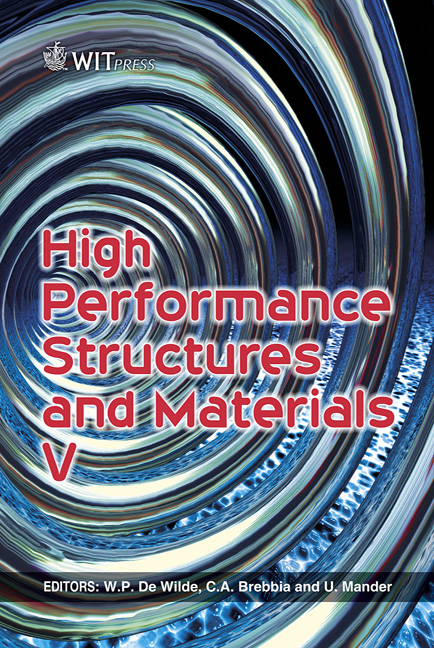Bending And Shear Behavior Of Ultra-high Performance Fiber Reinforced Concrete
Price
Free (open access)
Transaction
Volume
112
Pages
11
Page Range
79 - 89
Published
2010
Size
1,228 kb
Paper DOI
10.2495/HPSM100081
Copyright
WIT Press
Author(s)
C. Magureanu, I. Sosa, C. Negrutiu & B. Heghes
Abstract
This paper presents the experimental research regarding the physical-mechanical properties and the bending and shear behavior of the ultra high performance concrete. The cementitious composite with 2% volume of steel fibers was tested for the following characteristics: the compressive and tensile strength, the stressstrain characteristic curve for compression strength and flexural strength. Furthermore, a series of reinforced elements were tested and analyzed in terms of maximum crack width, deformations and maximum compressive strain. The specimens subject to 90°C thermal treatment for 5 days displayed an increase of compressive strength up to 180 MPa at the age of 6 days. The experimental data obtained on specimens with a thermal curing regime are evaluated by comparison with specimens with a water-curing regime. Keywords: ultra high performance concrete, compression, tension, splitting, flexure, shear, bending, fiber. 1 Introduction Ultra high performance fiber reinforced concrete (UHPFRC) stands for concretes with compressive strengths exceeding 150 MPa [1]. The concrete composition includes high cement content, mineral admixture (usually silica fume), steel fibers and a very low water/binder ratio, ensured by the use of last generation superplasticizers [1–4]. UHPFRC incorporates very fine sands or quartz sands with granule size up to 1 mm. Besides the superior physical-mechanical properties compared with ordinary concrete and even high strength concrete, UHPFRC presents very good ductility and durability properties [1–6].
Keywords
ultra high performance concrete, compression, tension, splitting, flexure, shear, bending, fiber





